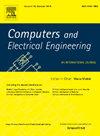A Q-learning-based hierarchical routing protocol in underwater acoustic sensor networks
IF 4
3区 计算机科学
Q1 COMPUTER SCIENCE, HARDWARE & ARCHITECTURE
引用次数: 0
Abstract
In order to guarantee a reliable data forwarding process, underwater acoustic sensor networks (UASNs), which are widely used in water environments like oceans and seas, need efficient routing protocols. Because sensor nodes are expensive to deploy in underwater environments and have limited energy capacities, energy optimization is a significant and practical issue, particularly for extending network lifetime. Today, various energy-efficient routing strategies have been suggested by combining opportunistic routing (OR) and reinforcement learning (RL). However, this subject deals still with different challenges. This paper introduces a Q-learning-based hierarchical routing protocol (QHRP) in UASNs. This approach builds a Q-learning-based routing tree, which contains a state set filtered by a two-step filtering process. It effectively increases the convergence speed of the Q-learning algorithm and lowers delay due to the tree construction process. In QHRP, the reward function considers network conditions and is obtained based on four metrics, namely remaining energy, strategic depth, the size of the state set, and successful transmission probability. Moreover, QHRP solves the void area problem in the routing tree by redefining the set of states and reward function. To evaluate QHRP compared to the three routing methods, namely RLOR, EE-DBR, and MURAO, various experiments are performed in terms of packet delivery rate (PDR), end-to-end delay (EED), data integrity, consumed energy, and the number of hops in the forwarding routes. These results show that QHRP improves PDR, delay, data integrity, energy consumption, and the number of hops by 9.068%, 9.03%, 9.84%, 15.61%, and 10.31%, respectively.
求助全文
约1分钟内获得全文
求助全文
来源期刊

Computers & Electrical Engineering
工程技术-工程:电子与电气
CiteScore
9.20
自引率
7.00%
发文量
661
审稿时长
47 days
期刊介绍:
The impact of computers has nowhere been more revolutionary than in electrical engineering. The design, analysis, and operation of electrical and electronic systems are now dominated by computers, a transformation that has been motivated by the natural ease of interface between computers and electrical systems, and the promise of spectacular improvements in speed and efficiency.
Published since 1973, Computers & Electrical Engineering provides rapid publication of topical research into the integration of computer technology and computational techniques with electrical and electronic systems. The journal publishes papers featuring novel implementations of computers and computational techniques in areas like signal and image processing, high-performance computing, parallel processing, and communications. Special attention will be paid to papers describing innovative architectures, algorithms, and software tools.
 求助内容:
求助内容: 应助结果提醒方式:
应助结果提醒方式:


